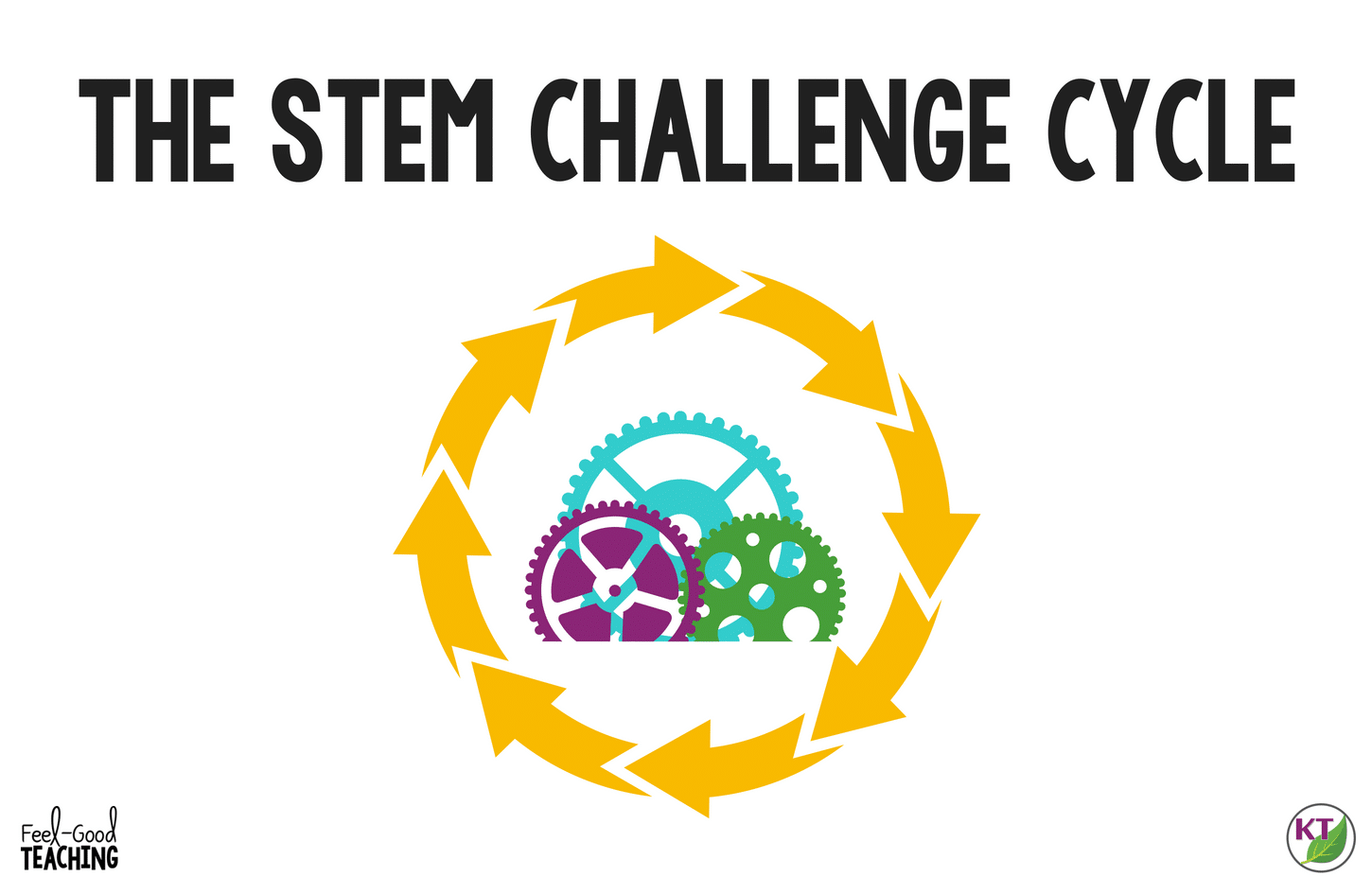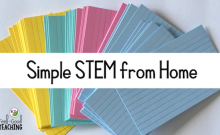You may be thinking to yourself, “Yes! I’m totally on board for STEM Challenge classroom mini miracles, but what is the format of a typical lesson? Is there some structure I can build into the design process for my students?”
Yes, of course!
After a lot of experimenting, I came to my basic lesson plan for a STEM Challenge. I call it the STEM Challenge Cycle. The steps are briefly described in the video below:
Sometimes people ask why I haven’t included research prior to the students’ first designs. They are, of course, referring to the engineering design process, where research is the second step — before designing and building. I assure you there are good reasons to postpone research until after the first build. Even engineers will tell you they don’t always follow the steps in order! Check out how Science Buddies puts it:
“Engineers do not always follow the engineering design process steps in order, one after another. It is very common to design something, test it, find a problem, and then go back to an earlier step to make a modification or change to your design. This way of working is called iteration, and it is likely that your process will do the same!”
Why Start with Design Over Research?
I have found that having students research prior to the first iteration of a STEM Challenge has some disadvantages.
First, students tend to try to recreate something they’ve seen in their research rather than come up with something new; their creativity is stifled. Think: replication vs. innovation. Students design more inventive, creative solutions to problems when they start with a set of criteria & constraints and their imagination!
Second, students aren’t always psyched to do research, even when they know there is a hands-on application to follow. I’ve noticed that students are more attentive and interested in doing research after they’ve given their first design a shot. They have a clearer understanding of what worked and didn’t for them and they are more innately interested in coming up with ways to improve their designs for a second iteration than they are in preparing for a first iteration.
What Else Should You Know?
As you and your students become more accustomed to STEM Challenges, you will be able to speed up parts of the process, particularly in the way you manage materials, get right into building, and learn to roll with the punches. You’ll probably want to give yourself a longer window when you’re first starting out (perhaps 90 minutes, as opposed to 45-60) just to allow ample time to set up and clean up materials as well as robust sharing/discussion/reflection time. Your process will evolve over time, so just be flexible and stay open to new ways of implementing STEM challenges!
Related Videos
What to Do Immediately Post-Build Phase
8 Discussion Questions for Student Reflection











